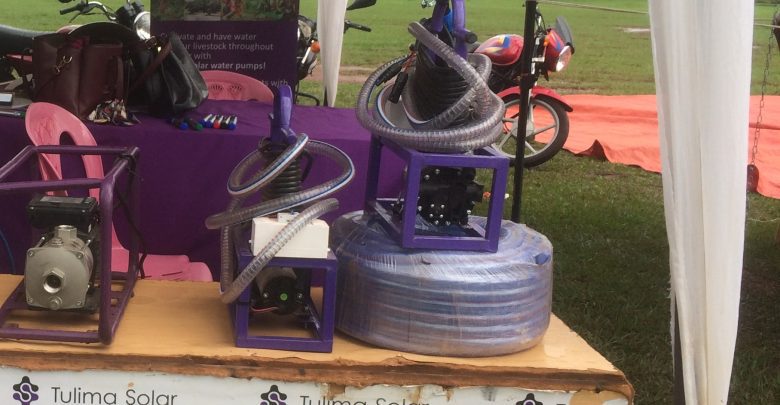
AgricultureNational
UGANDA: CHANGING RAINFALL PATTERNS, ADOPTION OF IRRIGATION TECHNOLOGIES, MARKETS KEY BOTTLENECK
Northern Uganda, Gulu District and Entebbe from time immemorial received the highest rainfall amounts until year 2010 when orchestrated forest degradation proved disruptive of the rainfall patterns.
Northern Uganda has two rainy seasons, one starts from late February to mid-June while the second rainy season begins from early July to late December.Irrigation and fertilizer use was not called for.
However, from 2017 today, the entire Acholi Sub-region has begun to experience dry spells and there is need for irrigation as rainfall patterns have been disrupted. However, not much has been achieved on irrigation schemes.
GULU CITY TUEDSAY JULY 2, 2024.
By Livingstone Okumu Langol
The Ministry of Agriculture, Animal Industry and Fisheries and the Ministry of Water and Environment came out with anirrigation policy dubbed agriculture transformation through irrigation, but theratio of cultivated area under irrigation to the irrigation potential is only 0.5%.
The Ministry of Agriculture also came out with good workable policy program to serve as the overarching instrument for regulation of irrigation development in the country which says it will create an enabling framework for a clearer system while streamlining services and processes for promotion of irrigation.
Improving technical information, sharing and simplifying decision making in this regard to increase yields beyond the rain-fed agriculture was the cornerstone of the initiative under the Agriculture Ministry
Also, the Ministry of Agriculture promised to increase opportunities for farmers to indulge in year-long agricultural production, with varieties of crops and enhanced income. The Ministry also had a target toincrease opportunities to access reliable markets.
The Ministry further aimed at realizing consistency in production, enhanced returns to production inputs, and enhanced food security.
The other ministerial aims were increased opportunities for employment and enhanced natural resource management through the adoption of agro-forestry.
Last year 2023, fortunately, there was promising rainfall in Acholi Sub-region, characterized by heavy rains from May up to December.This allowed farmers to embark on plantingmaize, and it is estimated that on average, every household got over 4 tons.
“Of course, there was high yield, increased opportunities because farmers responded to the Ministry of Agriculture, but access to reliable market to famers which was assured by the government, and donation of production inputs failed because the government failed to walk the talk,” says Okwera Moto Moto, a farmer.
“What happened, the middlemen came in and prices of maize dropped from UGX 2,000 per kilogram to as low as UGX500 per kilogramwithin 2023,” says Mr. Okwera.
“Many farmers wereforced to hoard their maize but prices continued to fall and they sold to middlemen at giveaway prices, a kilogram of maize came down to UGX 500,” Okwera asserts.
The Guardians News Correspondent, while in Odek Sub County in Omoro District asked a number of farmers, to find out if they have any knowledge about insurance for the losses they incur when prices of maize drop like it did from UGX 2,000 to UGX 500.
Over 50 farmers in Odek Sub County, Omoro District say they are not aware of insurance.

Mrs. Florence Ojok, a mother of three from Lakim village who has been a consistent farmer for over 10 years, says she is not aware that when a farmer has been affected by disaster like drought, low crop yield, and prices fluctuation, there is insurance for the loss.
“I am not aware that the government should have bailed out the farmers who have been affected. Now the middlemen have fleeced us, buying a kilogram of maize for as low as UGX 600 or lower,” Complained Mrs. Florence Ojok.
The reality seems to be thatinsurance providers havelargely overlooked smallholder farmers due to the cost of acquiring and serving rural customers in remote areas, making farmingpainfullyunprofitable.
Jakeyo Odong, 52 years old, from Awal-kok village, Lakwaya Sub-County, Omoro District says due to low price from bumper harvest, he could not send back his children to secondary school.
“I have 4 tons of Maize, I was expecting good income, but now I am stuck with Maize in the house, no buyers.” Odong said.
Lakor Jackson, Gulu District Production Officer when asked about performance in the agricultural sector says through Agricultural Cluster Development Project ACDP in Gulu District there are grants to Cooperatives, and West Acholi Cooperative Union has acquired a rice miller that mills 25 metric tons of rice per day, says Lakor Jackson, July 1.
“Then we have Latwong Cooperative in Bungatira Sub County, that benefitted through construction of a store with the capacity of 125 metric tons,” said Lakor.
“Also, we have constructed a 13-kilometer road that connects Latwong to Awach, Gulu District headquarters in order to boost agricultural production,” said Lakor.
“We support individual farmers with E-voucher system, where the farmers ask what they want, but we don’t give them cash, they get beans seeds, and rice seeds, and in Gulu District, we have been operating in three Sub-counties of Paicho, Palaro and Bungatira,” Lakor theproduction manager noted.
“When we realized that rain pattern in Acholi Sub Region has not been reliable for a period of 10 years, we decided to construct a mini weather station to monitor the weather conditions so that we can inform farmers about the possible risks,” Lakor added.
Asked about the challenges of post-harvests handling, Lakor reiterated that there have been a number of initiatives including the World Food Program WFP, construction of a‘Dry Up’ and produce cleaning machines.
“The farmers who take their produce for cleaning realize good products, and more and more farmers are attracted to the dry and clean services” said Lakor.
“Farmers also borrow loan from banks, sometimes up to UGX 300 million depending on their business plan and feasibility study,” said Lakor.
“There has been negative attitude from farmers about insurances, because in 2020, farmers from Acholi Sub-region, when drought happened, they suffered a lot of loss,” said Lakor.
“Insurance companies that have been operating in Gulu City have failed to initiate good working relations with the farmers, even the bank that give farmers loan, have not been able to adequately sensitise farmers about insurance,” Lakor added.
Lakor said despite the challenges with risks, some insurances companies are reaching out to farmers and registering those who have interest in crop production and livestock production.
“Usually, they sit down with farmers to assess the calamity, but they deal mainly with registered farmers. “We have more than 10 insurance firms in Gulu City that reach out to farmers,” the Gulu Production Manager said.
The Production Manager, Lakor says one of their strategic plans include increasing markets and value addition. “This happens well when farmers are in cooperative societies. “The Trade department does some market link but we are understaffed. “In my department, we should have 82 staff, but as of now we only have 32 staff. “The government has been putting a ban on recruitment,” Lakor says.
“In livestock department, we have recruited many staff, but when we give them scholarship to study, the go for Masters program, and again progress to PhD programs and do not come back to work with us,” Lakor decried.
Another challenge Mr. Lakor highlighted is about transport means. “We have only one working vehicle for the all the staff, but at least a few motor cycles for thefield staff,” Lakor says.
Talking about history one of the biggest problems is that the majority of our people were displaced in internally displaced people’s camps where they lost farming skills and depended on humanitarian handouts.
Dennis Pele, the Manager UAP All Mutual Insurance on a one on interview divulged that they have been operating in Northern Uganda for the last 10 years as insurance.
Pele says, “Our major clients are those who have big farms, and we have seven farmers both in Nwoya and Amuru districts. “We charge them based on what our clients are planting,” Dennis Pele disclosed.
“We see the community in Northern Uganda having lack of awareness,” the manager of UAP insurance noted.
He disclosed that lately, out of the 7 farms they had to compensate three whose crops were badly affected by drought.
The attempt to contact Marketing Officer for Gulu District Alfred Ochen was futile, as he was attending workshop in Kampala.

